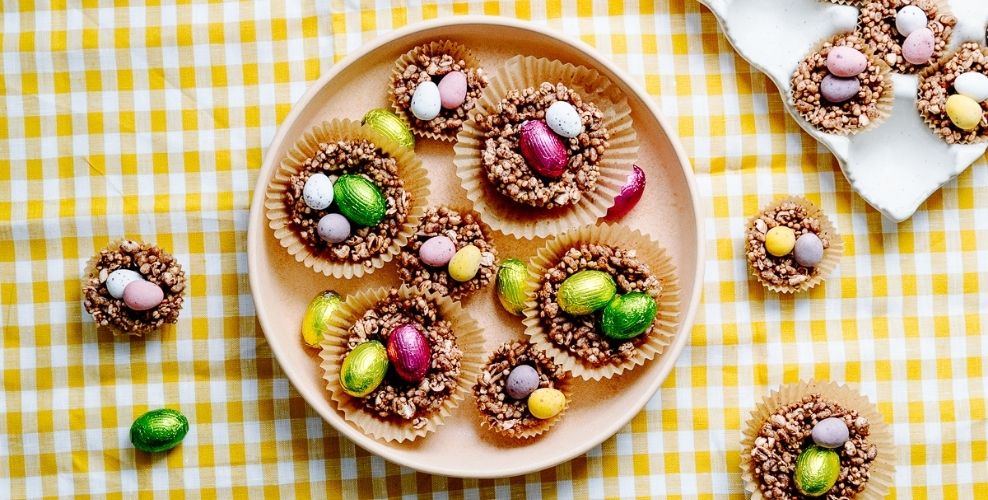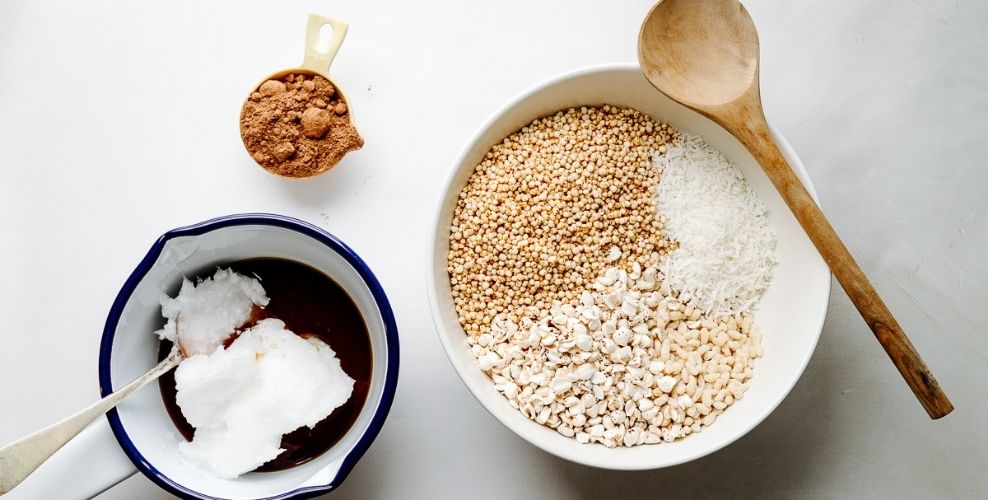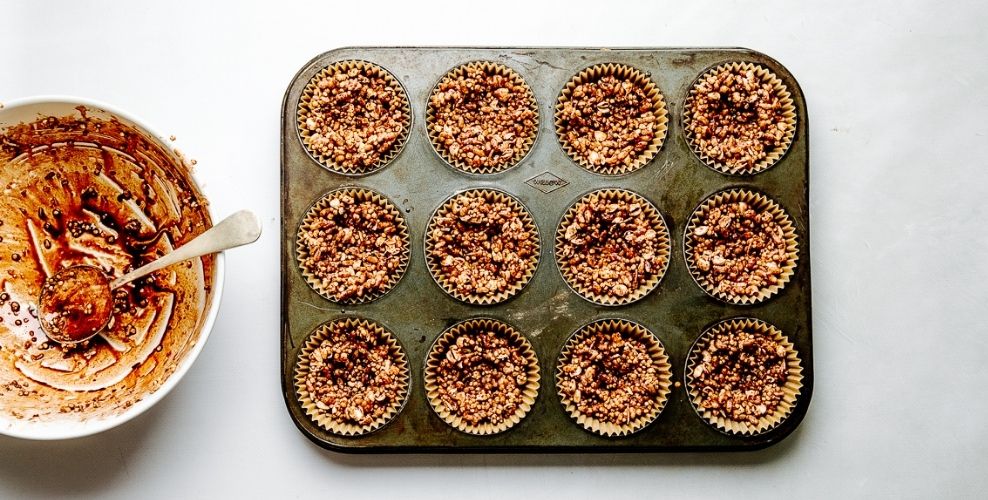Easter choc-coconut crackle nests
Set them up to ‘cook’ (no oven or hotplates required) an old party favourite with an Easter twist – crackle nests for their Easter eggs! And…they won’t even complain about the goodness of the healthy ingredients. Bonus!

Benefits of quinoa (pronounced keen-waa)
- Cultivated in South America since ancient times, quinoa is a nutrient-dense and gluten-free seed that is prepared and eaten similarly to a grain.
- Quinoa is a good source of many important nutrients including folate, magnesium, zinc and iron (of which kids tend to need more of).
- It’s also high in fibre and protein that are important in helping you feel full (and not overeat).
- In fact, quinoa contains more fibre than several other popular grains. For example, 1 cup of cooked brown rice contains 3.5 g of fibre, whereas quinoa contains 5.2 g for the same serving size.
- Adding fibre-rich foods, like quinoa, into the diet can help support digestive health by promoting regular bowel movements and fueling beneficial bacteria for a healthy gut.
What is cinnamon good for?
- A delicious spice, cinnamon has been used for its medicinal properties for thousands of years.
- It contains large amounts of highly potent polyphenol antioxidants; so powerful that cinnamon can be used as a natural food preservative!
- Cinnamon also has anti-inflammatory properties, to assist with many inflammatory-driven conditions such as mild allergies.
- Cinnamon is well known for its blood-sugar-lowering properties by decreasing the amount of glucose that enters your bloodstream after a meal,
- And, it has antifungal and antibacterial properties, which may reduce mild infections and help fight tooth decay and bad breath.
It’s important that you use the ‘true’ Ceylon cinnamon. Cassia cinnamon is the more common version found in supermarkets, given that it’s much cheaper than Ceylon cinnamon. And while Cassia cinnamon is safe to eat in small to moderate amounts, eating too much has been linked to a number of side-effects and may cause health problems because it contains high amounts of a compound called coumarin.

Ingredients
- 2 cups puffed rice
- 1 cup puffed quinoa
- 1 cup puffed buckwheat
- ¼ cup shredded coconut
- ¾ cup coconut oil
- ⅓ cup maple syrup
- ¼ cup cocoa powder
- 1 teaspoon ground cinnamon
- Pinch of salt

Instructions
- Line one or two muffin trays with muffin papers.
- In a large bowl, stir together the puffed rice, quinoa, buckwheat and shredded coconut.
- In a small saucepan, melt together the coconut oil and maple syrup over low heat until the coconut oil has just melted.
- Remove from the heat and whisk in the cocoa powder, cinnamon and salt. Allow to cool slightly.
- Pour the melted coconut oil mixture into the bowl of puffed cereals and coconut, and stir well until everything is thoroughly coated and the oil mixture is almost completely incorporated.
- Heap 1½ tablespoons of the mixture into each muffin paper, pressing it in gently. (For mini muffin trays use mini muffin papers and use around 1 dessertspoon of mixture per paper.)
- Use the back of the spoon or your finger to create an indent in the centre of the mixture to create a nest shape. Repeat with the remaining mixture.
- Refrigerate the nests for 2 hours, or until firm.
- Remove from the refrigerator and fill the centre of each nest with an easter egg (or two!). Store nests in the refrigerator until ready to eat.
Makes around 16 nests
















